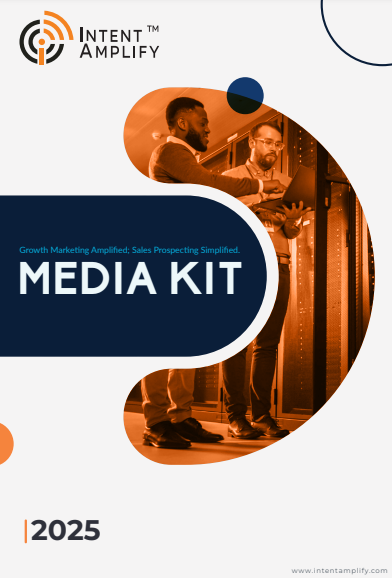
Marketing Intangible Services with the 7 Ps Model
- Last updated on: June 26, 2025
To sell something you can’t touch, hold in your hand, or demo might sound like a problem—but it’s the new norm for service companies in SaaS, consulting, law, cloud, and many more industries. In contrast to tangible goods, intangible services like strategy consulting, software-as-a-service subscriptions, or business process outsourcing don’t go bad, don’t have a SKU, or don’t have an unboxing experience. What they do possess is value that is perceived, trust, and experience. And smart marketers in 2025 are returning to a tried-and-true model in order to effectively sell these services: the 7 Ps of marketing.
This article breaks down how marketing intangible services using the 7 Ps framework can help service providers stand out in crowded markets. From SaaS to consulting, marketing intangible services requires a unique approach rooted in clarity, credibility, and customer experience.
1. Product: Define the Core Service and Its Augmented Value
When marketing intangible services, the “product” isn’t so much the centerpiece offering—it’s the whole experience a purchaser receives. A SaaS tool, for example, may focus on workflow automation as the core functionality, but the value is in 24/7 support, constant updates, ease of integration, and a user community. Your product definition in services must include:
Core service:
It solves a pain point that impedes business performance, like eliminating manual labor, enhancing collaboration across teams, or providing strategic guidance that informs high-impact choices.
Augmented service:
Features such as onboarding assistance, customer success teams, user training, regular updates, and SLA-supported warranties make the service comfortable and easy to embrace in the long term.
Differentiators:
Your differentiation can be industry expertise in the space, rapid deployment time, AI-driven personalization, or white-glove handling, anything that instills trust and warrants the premium.
Example – Bain & Company, a global management consultancy, doesn’t frame its product as “management consulting” but as transformation with measurable ROI, a value-based intangible positioning.
To stand out, phrase your service description in terms of outcomes, results, and perceived risk reduction. Refrain from over-technical jargon making the offering; rather, emphasize what the customer will get.
2. Price: Your Pricing Should Build Trust
Pricing intangibles is more a matter of perceived value than cost. Because the customer can’t “see” the product, they measure worth in terms of reputation, previous client results, and delivery guarantee. Low price can imply inferior quality, and premium pricing needs to be supported by data and evidence. Note the following pricing approaches to intangibles:
Value-based pricing:
Price according to the quantifiable ROI your service is producing, e.g., added revenue, lowered churn, lowered opex, so that the customer understands why they’re paying.
Tiered models:
Provide bundles so customers can grow in their usage—the startup for new companies, enterprise for existing companies—so prices match growth in usage, features, and intended business outcome.
Freemium-to-premium transitions
Offer a restricted but useful free option to show sooner, and upsell later with definite paths to further abilities that match the buyer’s increasing requirements.
Ex: HubSpot offers free CRM materials but progressively steers consumers toward more worthwhile paid levels. They charge by customer sophistication and expected business value. Clear pricing encourages confidence, particularly where the service outcome isn’t immediately apparent.
3. Place: Utilize Omnichannel Presence to Be Where Buyers Are
Service distribution marketing is not about shelves—it’s about being contacted. How can customers contact your business, view demos, attend webinars, or talk to experts? Your “place” strategy must include:
Digital hubs and content sites:
A nicely designed website, brimming with resources, case studies, and CTAs, makes your service simple to discover and simple to assess from anywhere.
Third-party review sites and platforms
Have an active presence on G2, Capterra, or Clutch to gain third-party endorsement that buyers believe during the pre-decision research process.
Events, partnerships, and communities:
Participate in webinars, partner marketplaces, and B2B communities where your potential customers happen to congregate naturally, building visibility and lead quality.
Example: A 2024 TrustRadius study found that 74% of B2B buyers now read peer reviews before evaluating a new service provider. Frictionless access needs to be a priority on every buyer channel.
4. Promotion: Not Awareness, but Confidence-Building
More than advertising is needed to sell invisible services – credibility-building at every touch point. If they can’t see it, they buy the promise of the outcome. Promotional strategies to stay top of mind:
Thought leadership content and industry thought leadership
Publish blog posts, articles, or opinion pieces proving deep expertise and value—this makes you an authoritative solution provider.
Client testimonials and video case studies:
These provide peer-to-peer social proof, where the prospect can witness the transformation from the perspective of comparable success stories.
Webinars and live sessions
Get prospects to experience your service style and industry knowledge firsthand in interactive environments that also allow for Q&A and personal interaction.
Example: Accenture publishes in-depth industry reports and transformation case studies that are both evidence and marketing. Writing is not about being heard—it’s about being credible and appropriate.
5. People: Raise Human Interactions to Build Trust
In a service where things cannot be touched, people are behind perceived value. Customers usually form an opinion of your offering based on interaction with sales representatives, success teams, and service personnel. Here is how to use “People” as your leverage:
High-empathy, trained teams
Your SMEs should be aware of the technical deep features of the proposition and how to convert those into useful business value for multiple decision-makers.
Visible subject matter experts (SMEs):
Place your SMEs in the spotlight via blogs, panels, and social media—this provides depth and credentials within your delivery ability.
Customer success as a value proposition:
Show active support models, custom success managers, and consultative partnerships, not fixing problems following the sale.
Example: Adobe Experience Cloud puts customer success and enablement experts up front in the offer, not an add-on. Humans build trust, and that sells services more effectively than any ad ever could.
6. Process: Make it easier for the Buyer and the Delivery Experience
For intangible services, the process is embedded in the product. Without visibility into how they will create value, clients won’t invest. Streamline your service delivery process by:
Transparent onboarding and kickoff processes
Set clear timelines, milestones, and expectations initially so customers understand what is happening in the first 30, 60, and 90 days.
Ongoing delivery of service and reporting:
Deliver formalized processes of delivery and deliver periodic progress reports measuring performance and client ROI in business terms.
Feedback loops and responsive improvements:
Get customers to provide feedback repeatedly and continuously improve their service experience—this creates a relationship, not a transaction.
Example: Slack‘s onboarding is easy, fast, and self-serve, providing value before asking for commitment. A hassle-free process gains trust and minimizes churn.
7. Physical Evidence: Make the Invisible Visible
Since there is no physical product, what they see is what they believe. That is why every presentation, review, and brand asset is concrete evidence of your credibility. Use your evidence plan to:
Professional-grade branded assets:
Proposal decks, demo tables, onboarding packages, and explainer videos all need to send a message about your commitment to quality, precision, and outcomes.
Clean, trustworthy UI/UX and platform design
A SaaS dashboard or service portal, whatever that is, visual clarity and accessibility are evidence of product maturity and business preparedness.
Third-party certifications, ratings, and awards:
Display ISO certifications, Gartner mentions, and analyst recognition prominently—they are a handy shortcut for busy buyers looking for instant endorsement.
Example: Deloitte employs research-based report quality and branded photography to allow the client to view their progress first before making the purchase. Effective service brands build for trustworthiness—because they recognize that sells.
Why the 7 Ps Still Apply to Intangible Services in 2025
As digital technology and consumer behavior change, the fundamentals of marketing intangible services do not. Consumers still ask themselves: Will it work? Can I trust them? Will I get value? The 7 Ps framework gives you a filter to consistently and deliberately address those questions. It ensures each of your go-to-market elements – price, process, people, or physical evidence is creating confidence, not friction.
As McKinsey pointed out in a 2025 B2B report, “Organizations that bring product-like thinking to services outperform peers by more than 30% on customer retention and expansion.”With this time-honored model hacked using contemporary tools and B2B context, service marketers can make uncertainty crystal clear and conversion-struck.
From Intangible to Unforgettable
Marketing intangible services is not magic, only a method. The 7 Ps provide you with a blueprint to make imperceptible value a tangible impact. Whether you’re a SaaS company building customer success, a law advisory working to attract clients, or a B2B platform selling data-driven intelligence, the journey forward is about building experiences, not campaigns. Each “P” must be employed as a strategic lever, not a checklist. When properly positioned, they offer clarity, consistency, and a competitive edge. And that’s precisely what today’s research-prone, skeptical B2B buyer is requesting.
FAQs
1. Why is it harder to market intangible services than physical products?
Marketing intangible services lacks physical form, making it difficult for buyers to evaluate value before purchase. There’s no demo unit or trial experience in many cases. Instead, trust is built through perceived expertise, service delivery history, and client outcomes. The 7 Ps framework helps structure marketing around these non-tangible yet critical value drivers.
2. How do the 7 Ps apply specifically to B2B service providers?
For B2B service providers, each P represents a crucial element of the buyer’s decision-making process—from how the service is delivered (Process), to how people experience support and onboarding (People), to how pricing reflects long-term ROI. These Ps turn abstract value into structured decision criteria for B2B buyers.
3. What is the most important “P” when marketing SaaS or tech services?
While all seven Ps are interconnected, Physical Evidence and Process are especially vital for SaaS. Buyers need visible proof (via UI, case studies, or free trials) and a seamless onboarding and support journey to feel confident in subscription-based services that continuously evolve post-purchase.
4. Can the 7 Ps framework improve conversion rates in intangible service sales?
Yes. By aligning each P, such as pricing transparency, differentiated service delivery, and content-led promotion, you remove uncertainty from the buyer’s journey. This increases trust, reduces perceived risk, and accelerates decision-making, leading to stronger conversion and retention rates over time.
5. How do I differentiate my service if competitors offer similar features?
Focus on how you deliver value. Your differentiators might lie in personalized onboarding, faster implementation, dedicated support, or niche industry expertise. Highlighting these under Product, People, and Process helps reframe your offer as a strategic partner rather than just a provider.




